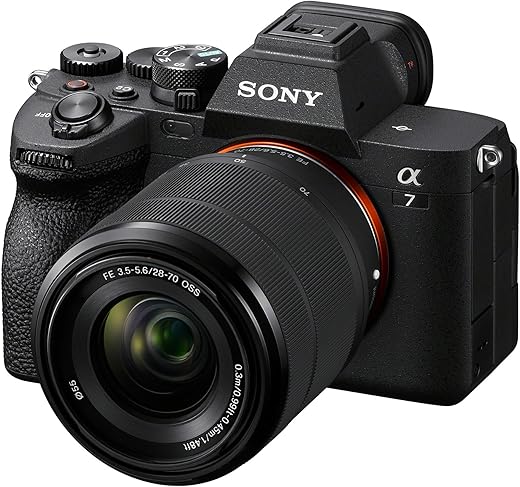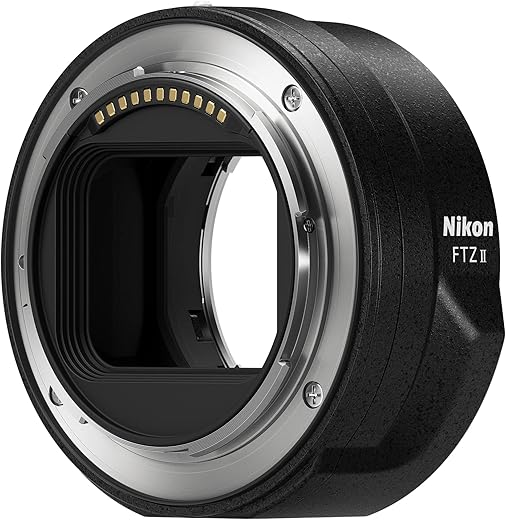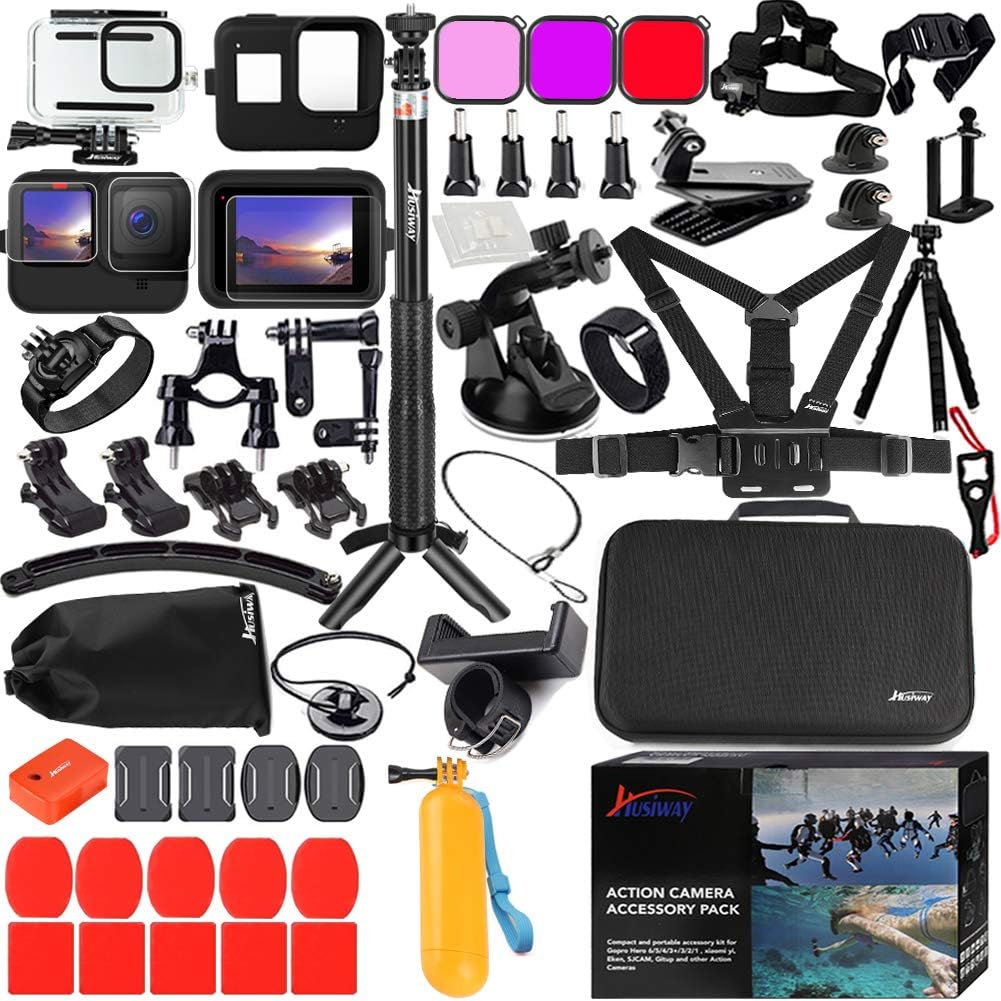In the ever-evolving world of photography and videography, having the right tools can significantly enhance your creative output. In this post, I will share my top five must-have Sony Alpha products that cater to a range of needs, from capturing stunning images to producing high-quality video content. Whether you’re a budding photographer or a seasoned influencer, these cameras are designed to elevate your work and offer impressive performance. Let’s explore the standout features of these essential Sony Alpha products, starting with the versatile Sony Alpha A6100 camera paired with the convenient 16-50mm lens and the innovative Sony Alpha ZV-E10 vlog camera kit.
Sony Alpha 7 IV Mirrorless Camera Kit
The Sony Alpha 7 IV Full-frame Mirrorless Interchangeable Lens Camera combines exceptional photo and video capabilities with user-friendly design. With a powerful 33MP full-frame sensor and the advanced BIONZ XR image processing engine, I can capture stunning high-resolution images and 4K video that meet my creative vision. The inclusion of the 28-70mm zoom lens kit adds versatility, allowing me to tackle various shooting situations with ease.
While the initial investment may seem steep, the A7 IV’s remarkable performance makes it well worth the price for both beginners and seasoned enthusiasts. Its intuitive menu and ergonomic design enhance the user experience, especially for those transitioning from other camera systems. As I delve deeper into its features, I’m continually impressed by its impressive autofocus and video capabilities, making it a reliable companion for all my photography and videography needs.
Sony Alpha 7 IV Mirrorless Camera
The Sony Alpha 7 IV is a powerful hybrid camera that effortlessly combines high-resolution 33MP still images with stunning 4K video recording capabilities at up to 60 frames per second. I’ve found its advanced features, such as the next-generation BIONZ XR image processing engine and the innovative S-Cinetone color profile, particularly beneficial for both photo and video projects. This camera excels in various conditions, making it ideal for my diverse shooting needs, from casual vlogs to professional-quality landscapes.
Transitioning from previous models, I appreciate the improved ergonomics and autofocus system that significantly enhance my shooting experience. Although its compact design is somewhat bulkier than earlier versions, it feels robust and offers outstanding performance, including impressive low-light capabilities. Despite occasional reports of overheating during extended video shoots, my overall experience with the Alpha 7 IV has been exceptional, solidifying my trust in Sony’s mirrorless technology.
Sony Alpha a6400 Mirrorless Camera
I found the Sony Alpha a6400 mirrorless camera to be an exceptional blend of portability and performance. Its compact design makes it easy to carry, while the 24.2 MP Exmor RS CMOS sensor delivers impressive image quality. With its real-time Eye Auto Focus and rapid 11 frames per second continuous shooting, capturing fleeting moments in stunning detail has never been easier. The versatile 16-50mm kit lens exceeded my expectations, providing sharp, vibrant images that are perfect for both photography enthusiasts and professionals alike.
Equipped with a tiltable LCD screen, the a6400 is tailored for vlogging and various shooting angles, making it an invaluable tool for aspiring videographers. The ability to shoot 4K video combined with features like ClearZoom enhances its usability without compromising quality. Although it lacks in-body image stabilization, the overall functionality and lightweight build make it a fantastic choice for travel. I appreciate how this camera stands out in its category, proving that professional-grade results can come in a compact package.
Sony Alpha A6100 Camera with 16-50mm Lens
The Sony Alpha A6100 Mirrorless Camera is a remarkable choice for both beginners and those looking to elevate their photography skills. Equipped with a 24.2MP APS-C Exmor sensor and the latest BIONZ X image processor, this camera delivers exceptional image quality and performance. The impressive real-time autofocus features, including Eye AF for humans and animals, allow for captivating shots in both fast-paced and low-light conditions, making it perfect for a diverse range of shooting scenarios.
This versatile camera also shines in video recording, boasting 4K capabilities and a 180-degree tiltable touchscreen LCD, ideal for vlogging or capturing selfies. While some reviewers noted limitations with the electronic viewfinder and menu navigation, many found it easy to adapt and praised the camera’s overall performance. Lightweight and user-friendly, the Alpha A6100 is a fantastic option for those who want to explore the world of photography without breaking the bank.
Sony Alpha ZV-E10 Vlog Camera Kit
I have been thoroughly impressed with the Sony Alpha ZV-E10, a mirrorless vlogging camera that truly elevates my content creation experience. Its large 24.2MP APS-C sensor delivers stunning imagery, while the 4K video capability, oversampled from 6K, provides exceptional clarity and detail. The flip-out vari-angle LCD screen allows for creative shot compositions, making it easier to capture dynamic angles and self-vlogs with confidence.
What stands out the most for me is the camera’s seamless autofocus system, which keeps subjects sharp and in focus, even in challenging conditions. The Product Showcase Setting is especially useful, effortlessly shifting focus between my face and objects during reviews. With advanced audio options and a compact design, the ZV-E10 empowers me to produce professional-quality content without the hassle, making it an invaluable tool in my creative toolkit.
Explore Competing Options
Common Questions About Sony Alpha Cameras
When comparing the image quality of Sony Alpha cameras to competitors like Canon and Nikon, I find that several factors come into play, including sensor technology, color science, dynamic range, and low-light performance.
Sony has pioneered the use of stacked Exmor sensors, which often provide excellent dynamic range and low-light capabilities. Many of their Alpha models, especially the full-frame ones, have demonstrated outstanding performance in these areas, often yielding better high ISO results than similar models from Canon and Nikon.
Canon has its own strengths, particularly in color science, which many photographers appreciate for skin tones and vibrant colors in portrait photography. The latest Canon mirrorless cameras, like the EOS R series, have started to bridge the gap in terms of sensor performance, delivering impressive image quality across the board.
Nikon, especially with its Z series of mirrorless cameras, has also shown remarkable improvements in image quality, particularly with their full-frame models that feature large sensors and robust dynamic range.
Overall, while Sony Alpha cameras tend to excel in technological advancements and low-light performance, both Canon and Nikon have made significant strides in image quality, offering unique strengths that cater to different photographic styles and preferences. Ultimately, the choice may come down to personal preference and the specific requirements of the photographer.
Choosing the right Sony Alpha camera for different photography styles involves understanding the specific features that enhance various types of photography. Here’s how I approach it:
- Portrait Photography: For portrait work, I typically prioritize cameras that offer excellent autofocus performance and the ability to produce beautiful bokeh. Models like the Sony Alpha 7 III or the Alpha 7R IV are great choices because they feature fast phase detection autofocus and a full-frame sensor, which helps achieve a shallow depth of field for stunning portraits.
- Landscape Photography: When it comes to landscape photography, I opt for cameras with high resolution and dynamic range to capture intricate details in both highlights and shadows. The Sony Alpha 7R series, particularly the Alpha 7R IV, stands out for its impressive 61 MP sensor, allowing me to create large, detailed prints. Additionally, features like in-body image stabilization can be beneficial for shooting in low light or at slow shutter speeds.
- Sports Photography: For capturing fast-paced action, I focus on cameras that offer high continuous shooting speeds and excellent autofocus systems. The Sony Alpha 9 II is a top choice due to its capability of shooting at 20 frames per second with an electronic shutter, allowing me to freeze fast-moving subjects. The impressive autofocus system, with 693 phase-detection points, ensures I can track subjects effectively.
In summary, I assess the key attributes of each camera that align with the demands of the specific photography style I’m pursuing, such as resolution, autofocus capabilities, and shooting speed, to ensure I make the best choice for my needs.
To update the firmware on a Sony Alpha camera, I typically follow these steps:
- Check the Current Firmware Version: First, I turn on the camera and navigate to the settings menu to check the current firmware version. This is usually found under the “Version” option in the menu.
- Visit the Sony Support Website: I go to the official Sony support website and search for my specific camera model. I look for the “Firmware” section to find the latest firmware updates available.
- Download the Firmware: If a new firmware version is available, I download the update file to my computer. The file is usually compressed, so I extract it to access the update.
- Prepare a Memory Card: I format a compatible memory card in the camera, ensuring it is empty. Then, I connect the memory card to my computer and transfer the downloaded firmware file onto the card.
- Insert the Memory Card: I safely eject the memory card from the computer and insert it back into the camera.
- Start the Update Process: With the camera turned off, I press and hold the appropriate buttons (consulting the manual for my model) while turning on the camera to initiate the firmware update. The camera should recognize the firmware file and prompt me to start the update.
- Follow On-Screen Instructions: I carefully follow any on-screen instructions that appear. It’s important not to turn off the camera during this process, as it could lead to permanent damage.
- Verify the Update: After the update is complete, I check the firmware version again in the settings to ensure that the installation was successful.
- Back Up Settings: I often back up my camera settings after the update in case I need to restore them later.
By following these steps, I can effectively update the firmware on my Sony Alpha camera.













Loved the list! Can’t believe I didn’t know about that lens!
I totally agree with the choice of cameras. The A7 series is a game-changer!
Anyone else have experience with the tripods mentioned? Thinking of getting one!
Which of these products do you think is the best value for money?
As a newbie, I found this super helpful! Thanks for the tips!
Awesome suggestions! I’m definitely adding that microphone to my gear.
Great article! Could you do a follow-up with accessories for beginners?
I think the battery grip is a must-have for long shoots. What do you think?